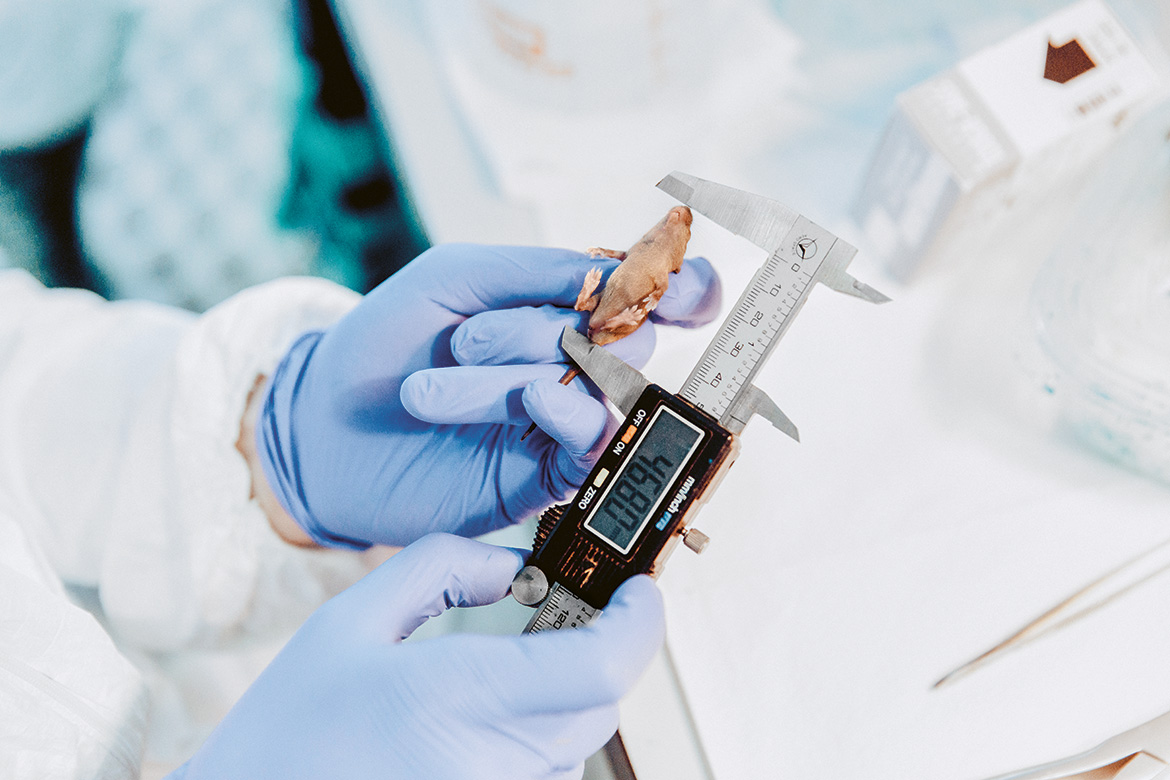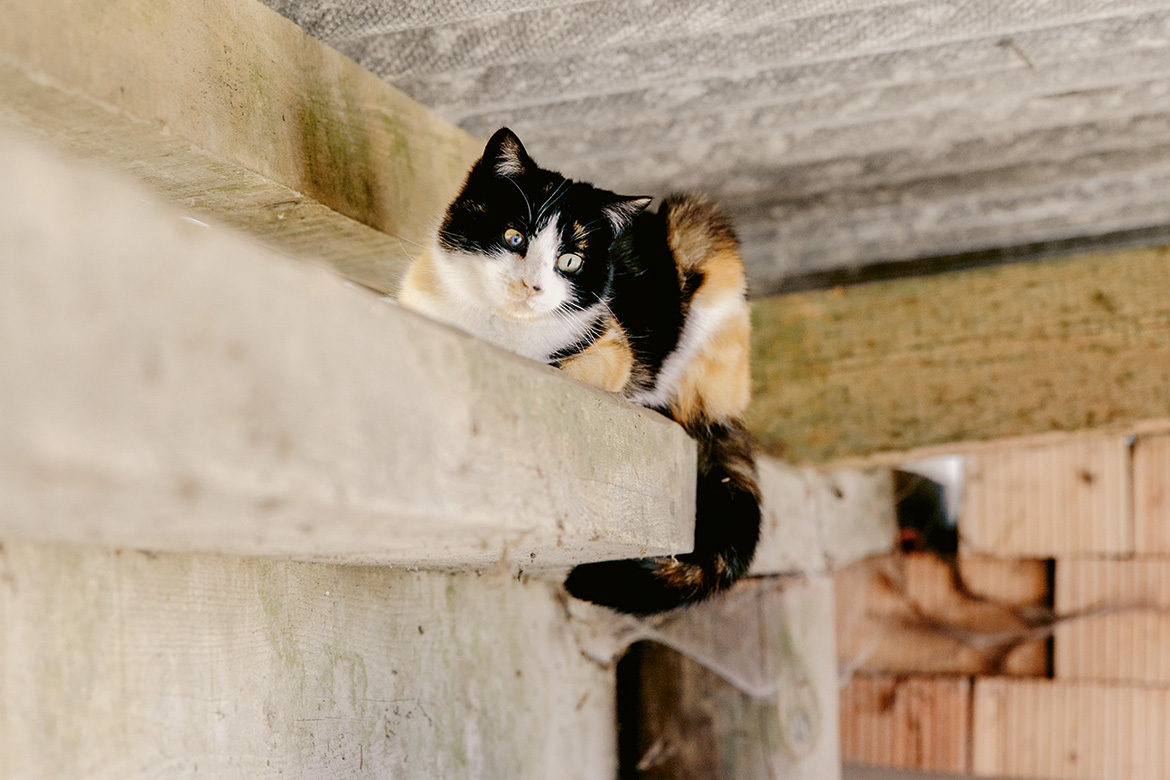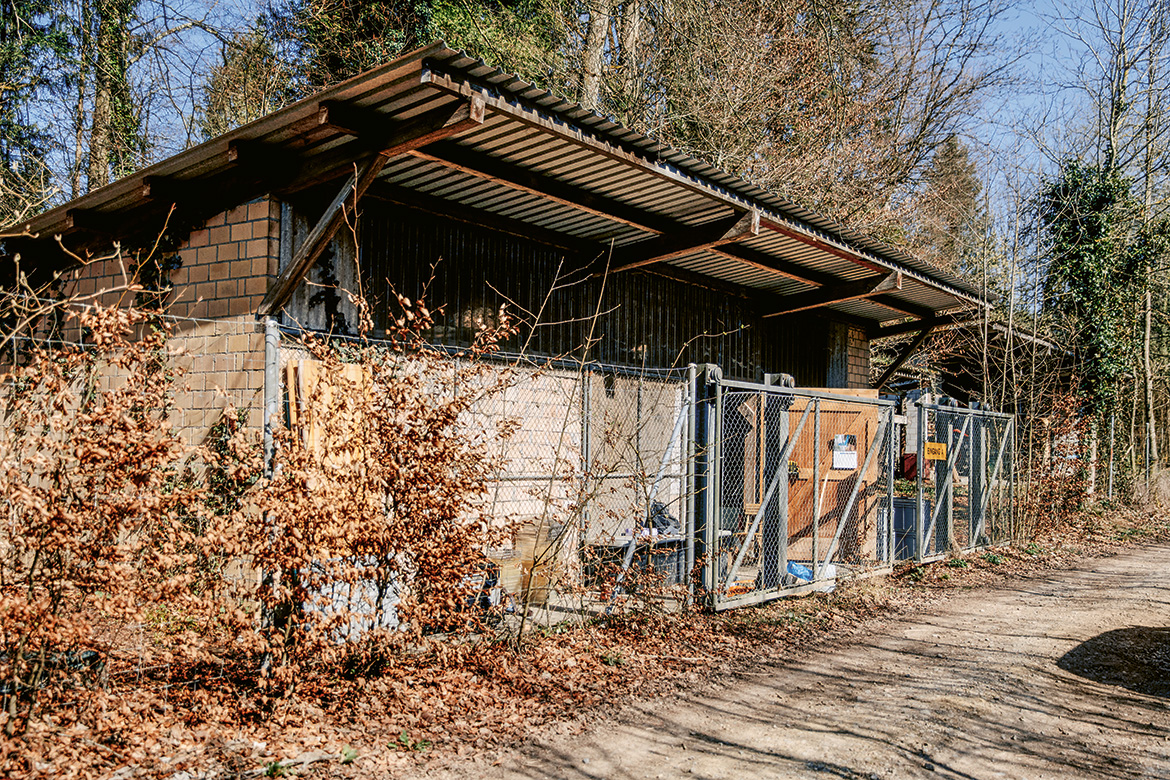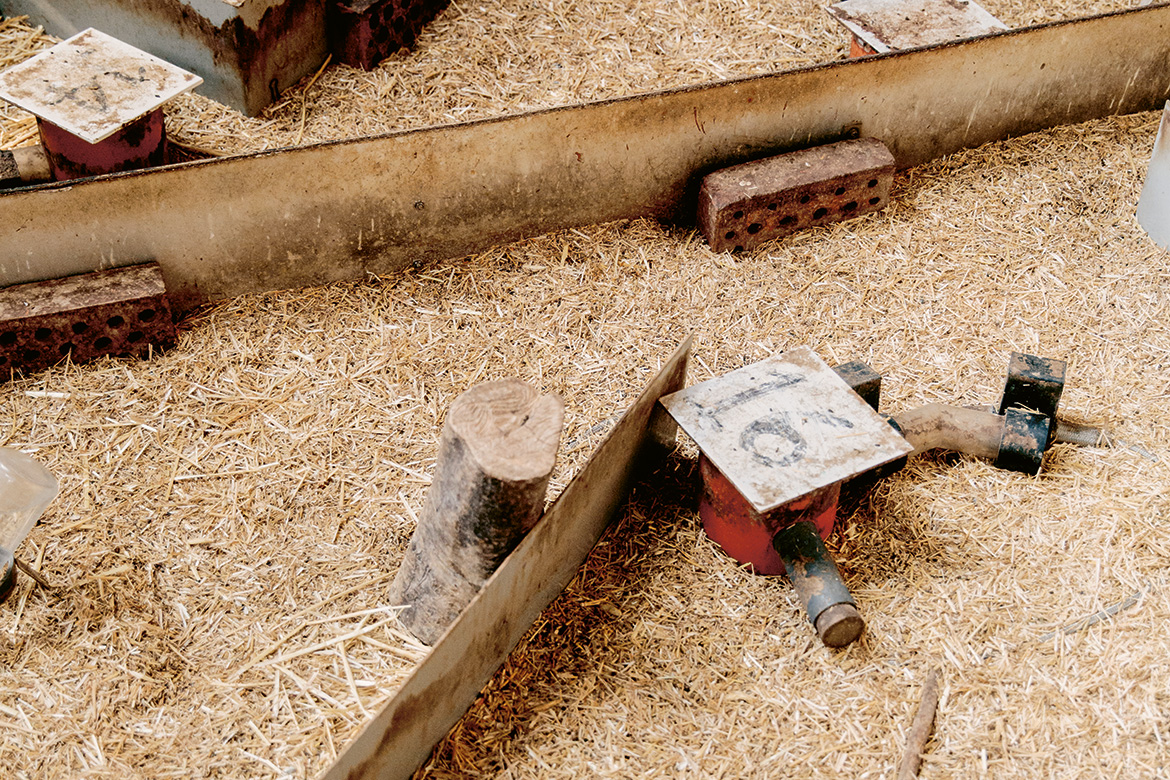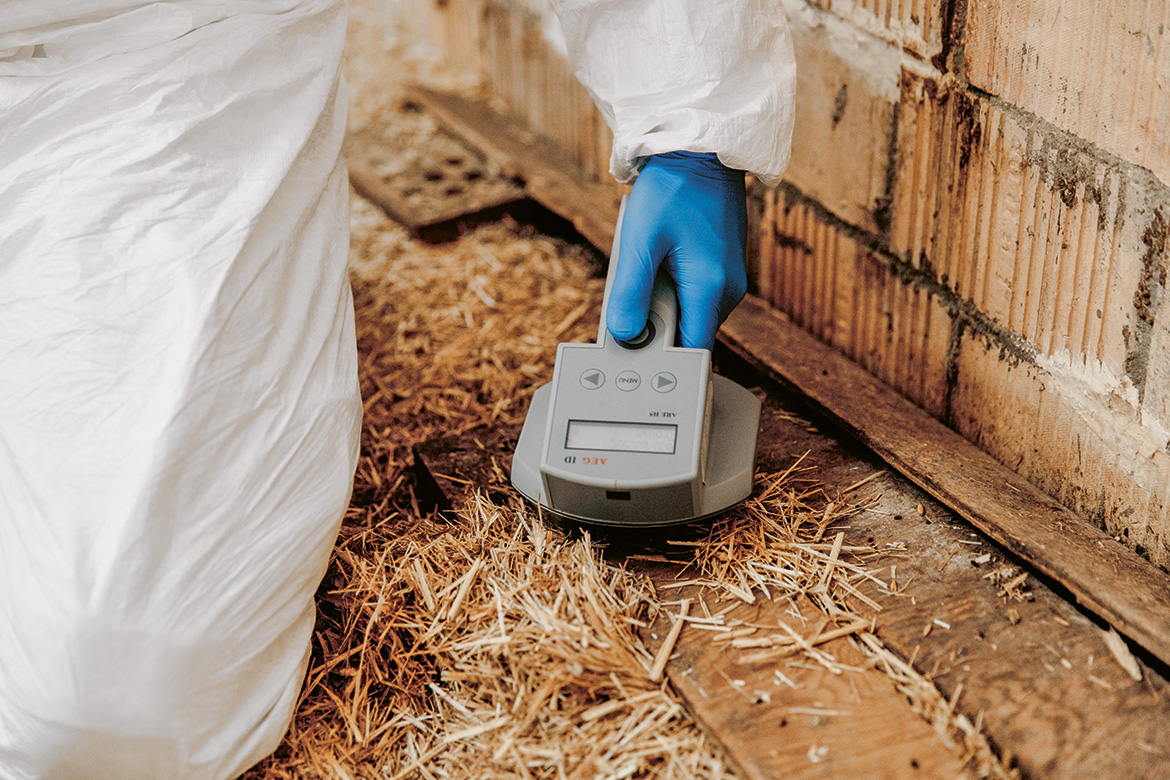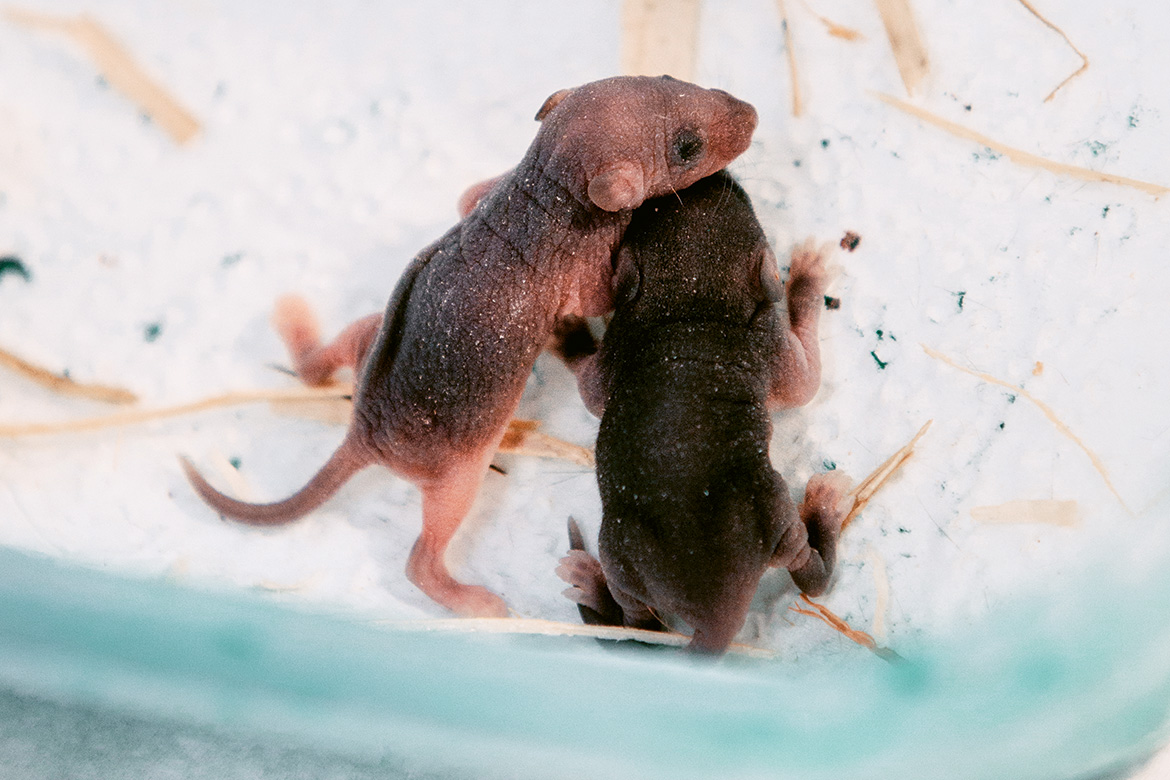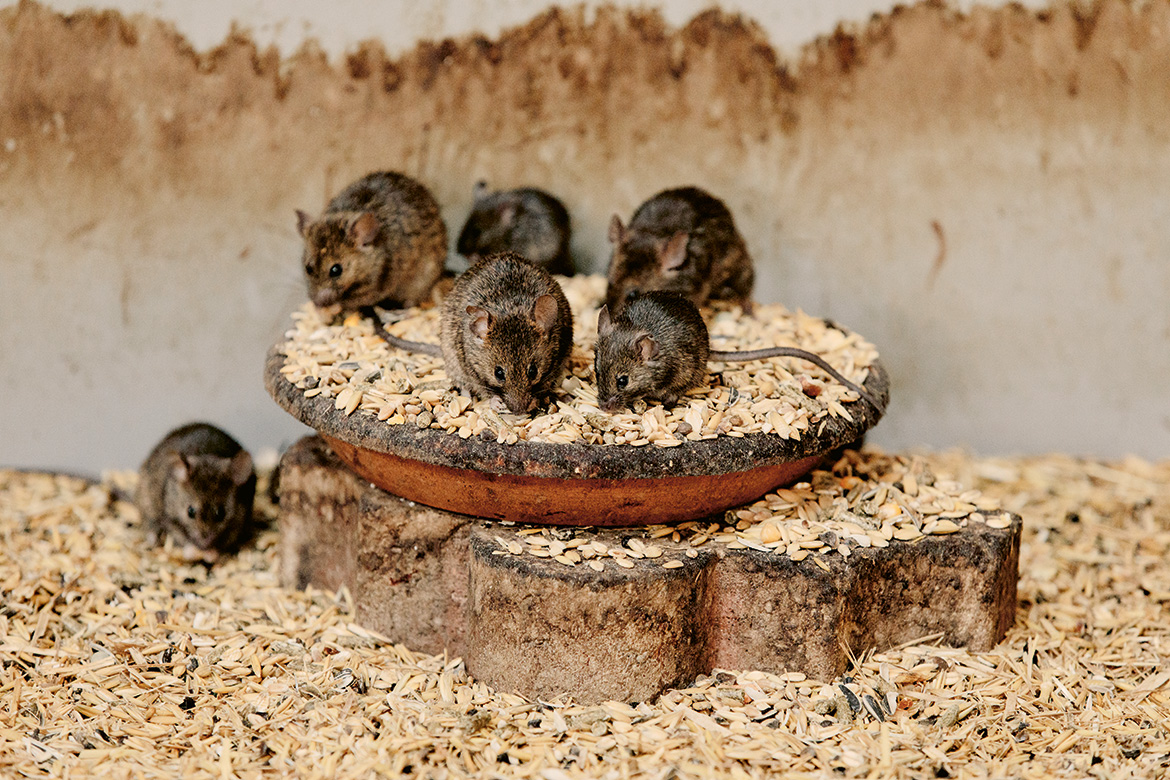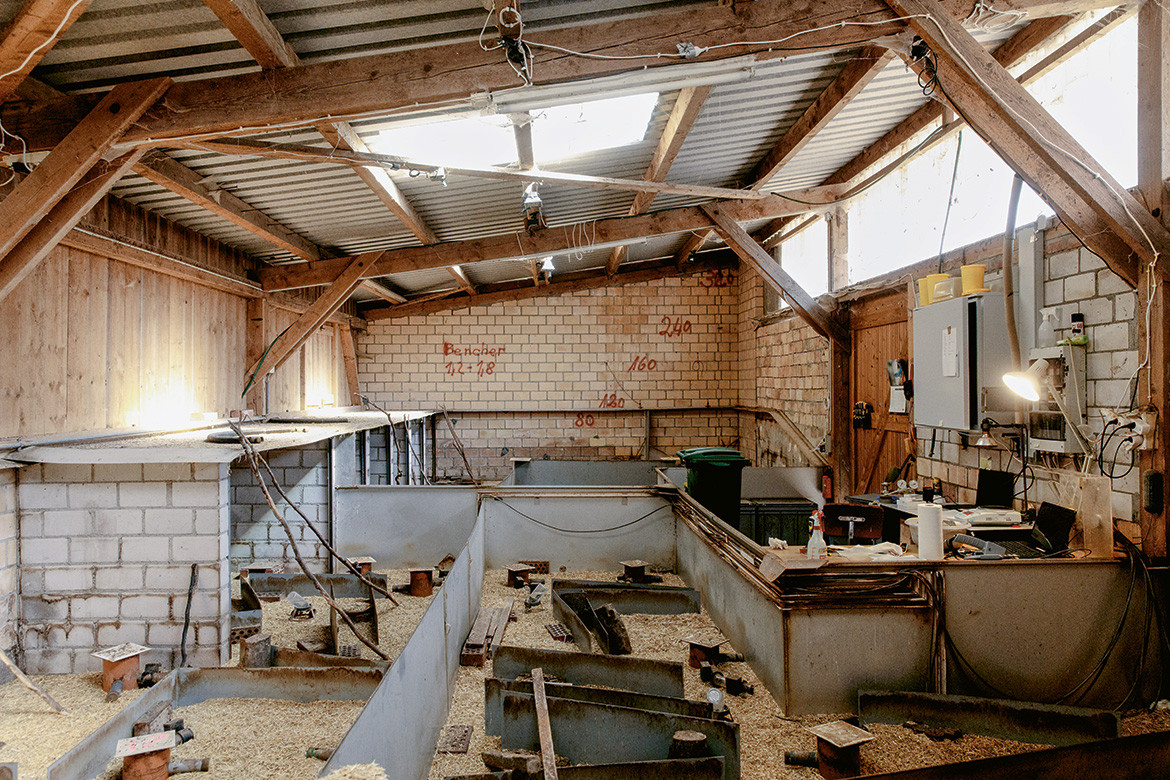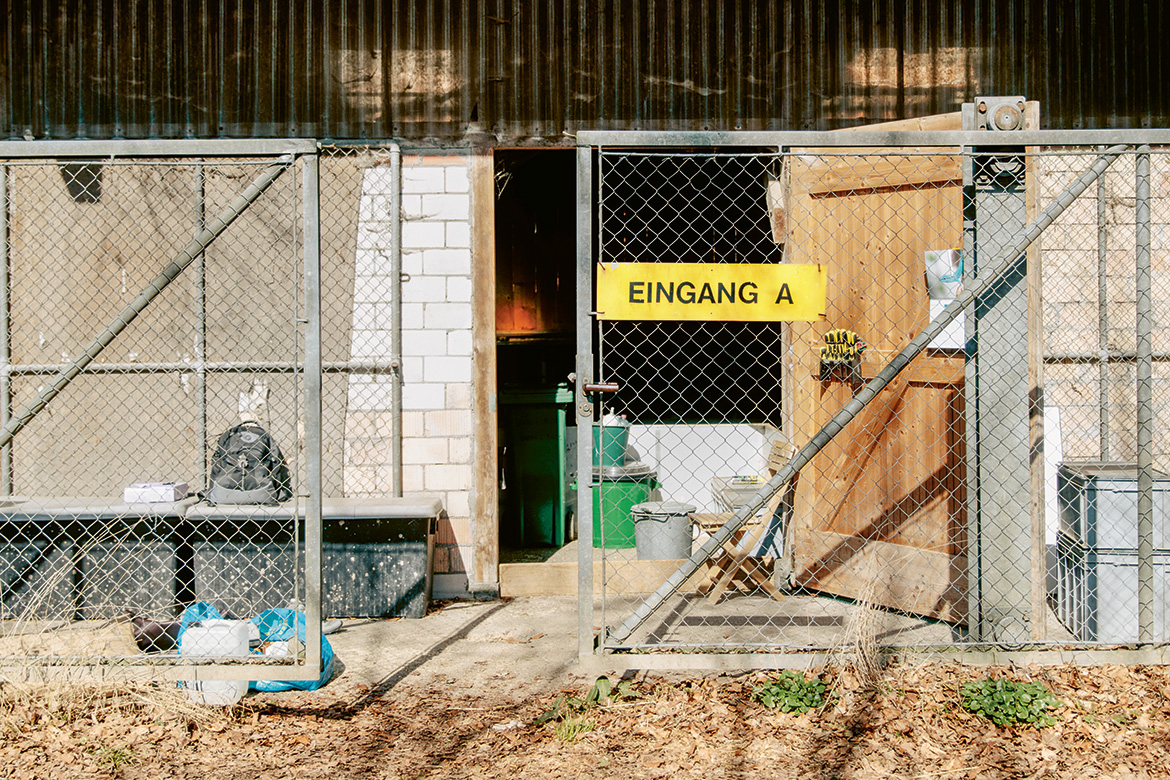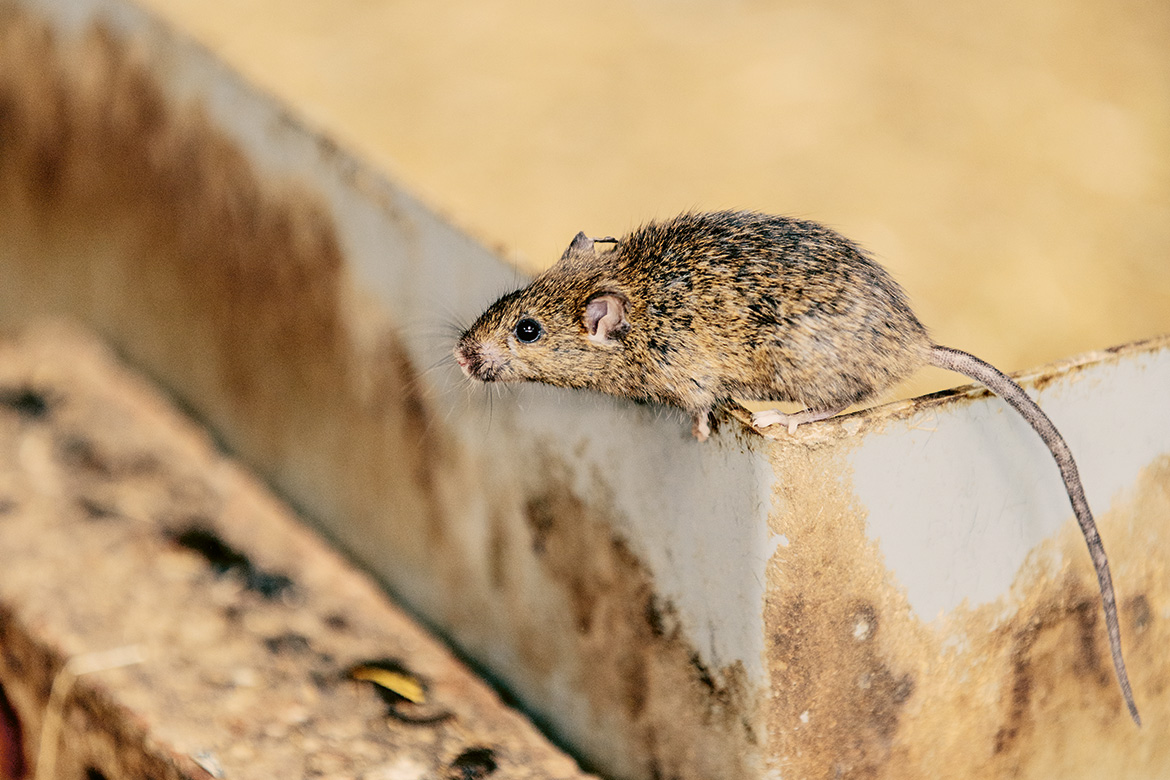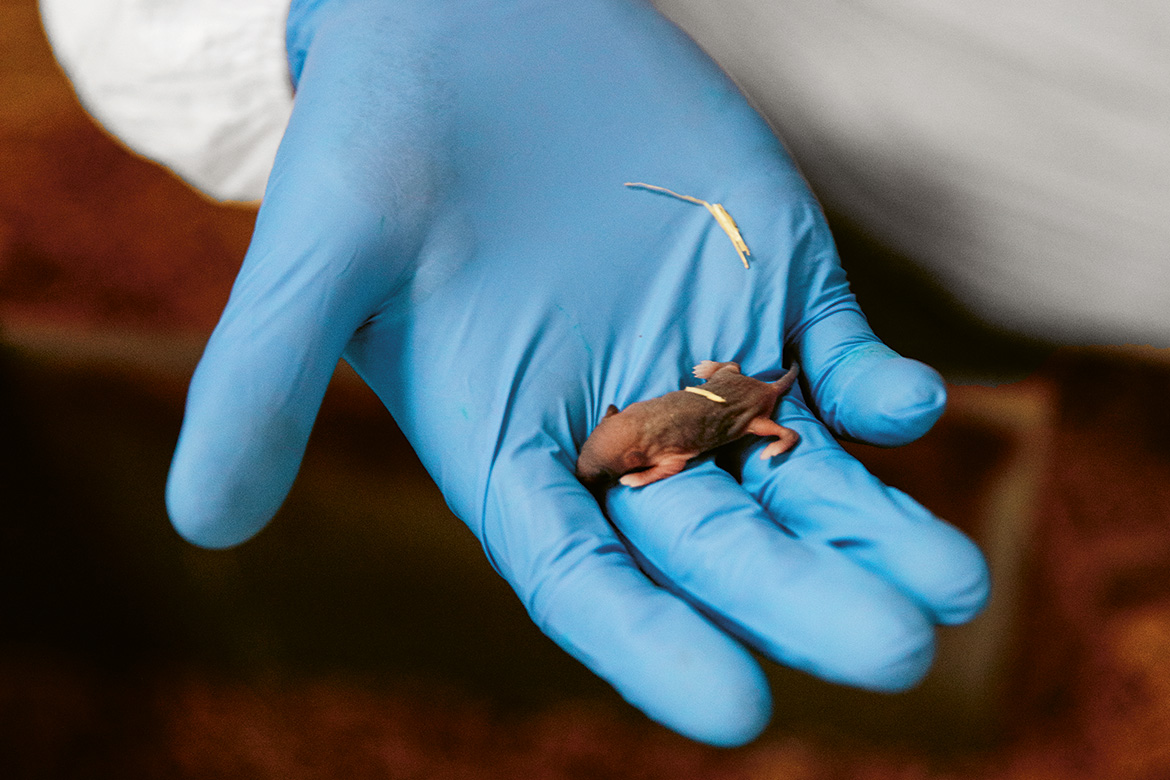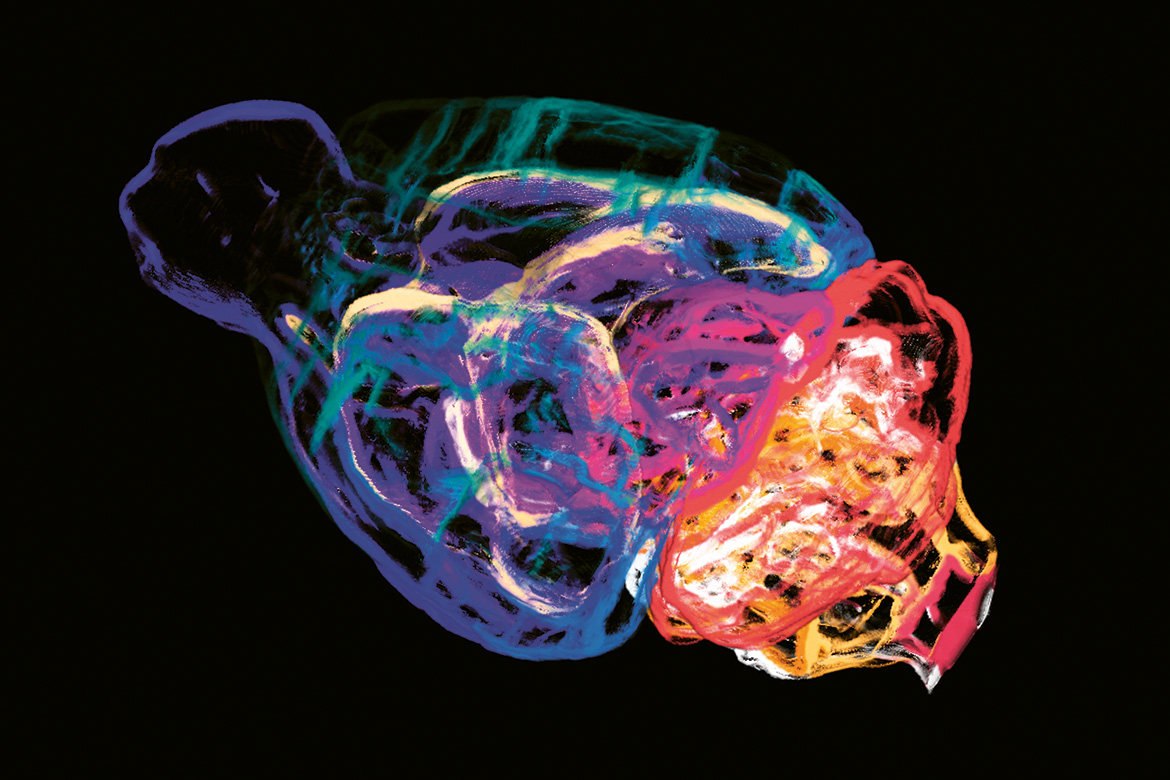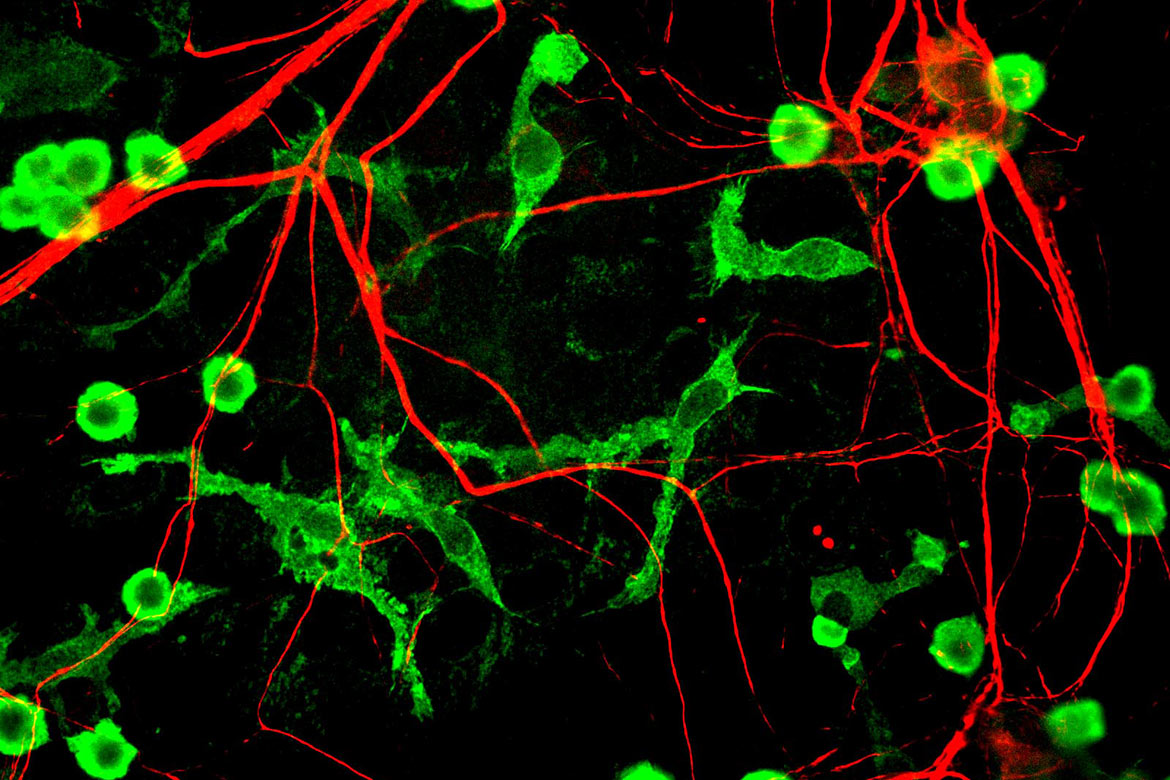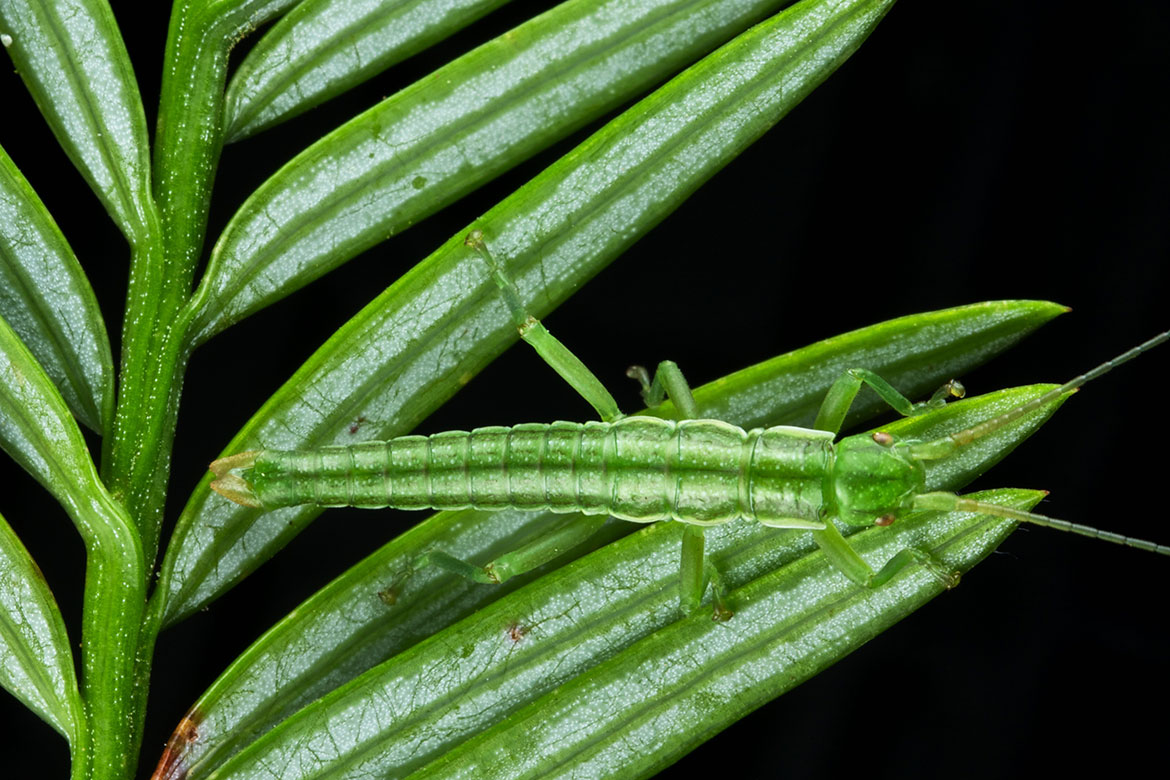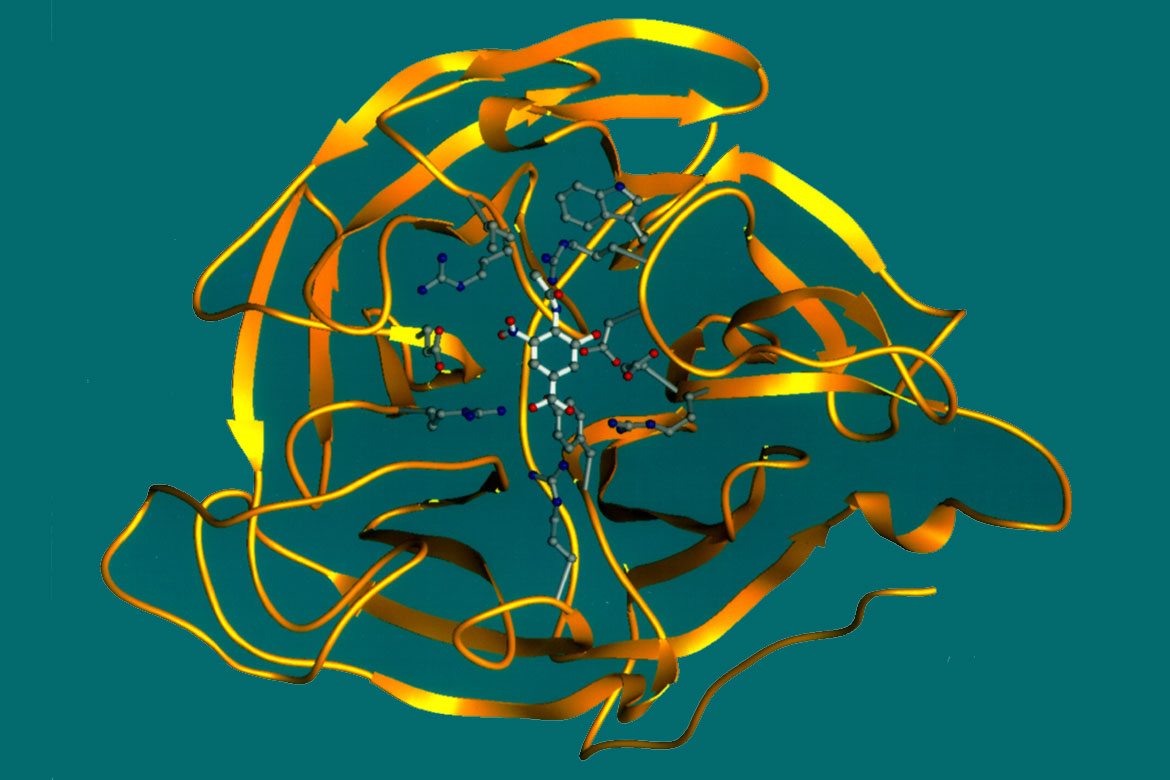Report
Mice at play
In a unique project, researchers from the University of Zurich have been observing a population of wild house mice for 17 years. They’re learning things they’d never see in the lab. We’ve gone on a field trip to visit them in their barn.
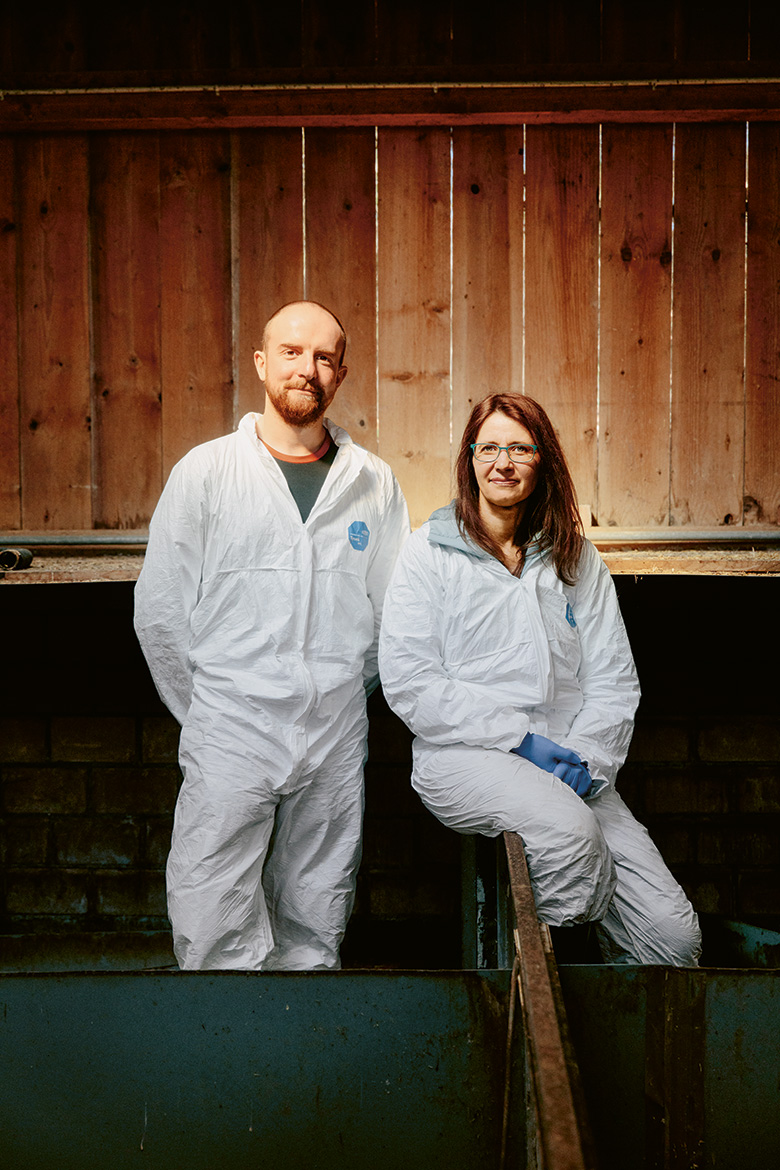
Bruce Boatman and Anna Lindholm | Image: Joel Hunn
It’s almost inconceivable that 600 house mice are living in this space of just 80 square metres. It’s now ten in the morning, it’s spring, the weather is sunny, and since mice are active at dusk and at night, there are only a few of them out and about. They are nibbling on seeds, and every now and then, a greyish-brown ball of fluff scurries through one of the holes in the narrow dividing walls. These nimble little creatures are part of a research project that is one of a kind in the world. For the past 17 years, researchers from the University of Zurich have been observing a population of wild house mice in this barn near Illnau. “It enables us to observe aspects of the social lives of these animals that we could never experience properly in the lab, if at all”, explains Anna Lindholm, an evolutionary biologist at the University of Zurich. For example, they can observe how social connections are established between the animals, and what influence these connections have on their behaviour, their reproduction and their competition in mouse society.
That competition is a bloody business. The research technician Bruce Boatman trudges through the barn and looks through the straw on the ground. He has found two dead baby mice today, both of which have been half-eaten. “The males kill the newborns of females with whom they haven’t mated, which enables them to remove their competitors from the gene pool”, he explains. But the females also kill the babies of other mothers, even despite the fact that they often live in one nest when bringing up their young. In these community nests, the females share the tasks of feeding all the young mice and keeping them warm. “I wanted to understand this cooperative behaviour better”, says Barbara König, the evolutionary biologist who initiated the project and still runs it.
Catfights among the mice
This is why she built up this population. She started with 12 mice from neighbouring farms. In this barn, the researchers ensure that there is a suitable environment for the mice, with straw, food and 40 cosy nest boxes. Three times a week, a team member visits to document developments in the population. They make a note of new litters, take samples from all the individuals for their genetic analyses, and insert chips in them when they are sexually mature. Once the mice have been chipped, they join the main part of the barn project. In the access tunnels to the nests, radio antennae automatically register the IDs of the individual animals. This lets the researchers know which mice are at home in which nests, and how much time they spend with their fellow mice.
The researchers found that the females adapt their rearing strategies to the situation at hand. Younger, correspondingly weaker females tend to work with other mothers. They have to reckon on their female nesting partners killing off some of their young. “But it still means they have a better chance of raising offspring than they would alone”, says König. Older, stronger females often raise their young successfully on their own.
The data from the Illnau barn have also revealed that competition between females is as intense as it is among the males. The researchers were able to observe this on account of the imbalance in reproductive success among the individual animals: Just as with the males, only half of the females have offspring that survive. “The competition between females used to be underestimated”, says König. This was because almost all female house mice kept in the lab succeed in raising offspring, and they always decide to cooperate. The relatively stable environment in the lab thus leads mice to adopt different modes of behaviour than is the case with natural populations.
A migrating supergene
In the barn, Bruce Boatman lifts up the lid of one of the nesting boxes and finds two mouse babies – blind, hairless and barely bigger than a five-franc piece. “They’re about 13 days old”, he guesses. He lifts them carefully by the neck, puts them on the scales, and measures the length of their body and head. He then uses a special pair of pincers to snip off a tiny piece of their ear. “They have few nerve endings there, so it barely hurts”, explains Lindholm. She will isolate their DNA from these samples when she’s back in the lab, in order to determine the degree of kinship among the mice, to analyse further genetic characteristics, and to link them up with their observations from the barn.
In the course of her work, Lindholm has come across the impact of a specific supergene: the so-called t-haplotype. It is a complex gene made up of several inherited genes that have gained an advantage over others. Sperm that contain this supergene restrict the mobility of other sperm of the same animal, thereby increasing their own chances of being inherited. The combination of genetic data and the data from the radio transmitter in the barn have enabled Lindholm and her doctoral student Jan-Niklas Runge to recognise that the supergene influences migration behaviour among mice. Carriers of the haplotype are 50 percent more likely to emigrate permanently away from the barn than mice that do not possess the supergene. The haplotype thereby ensures its own proliferation”, says Lindholm.
Outside the barn, a cat is creeping around. This rascal is well-known to Lindholm and Boatman, for it’s one of several cats that prowl the barn now and then. Normally, they can’t get in. “We only had a tragedy once, back in January 2019”, says Lindholm. It seems that a few small cats were able to push through the gap at the bottom of the door, despite it being secured with wire netting. In a single night, they lost over a third of their mice – they were either eaten by the cats, or escaped the barn for good. But the population has meanwhile recovered.
Sick mice self-isolate
It is a good thing that it did recover, because this long-term project has resulted in all manner of scientific findings, some of which were completely unexpected. For example, the team discovered that their mice developed signs of domestication. Not in their behaviour – the mice still flee from people, and defend themselves if picked up. But physical changes have occurred. More and more of the mice have got white marks on their coats, and their skulls and noses have become shorter. Such changes occur in many domesticated animal species – such as dogs – and they go hand in hand with tamer behaviour. It would seem that their regular contact with people has sufficed for this to occur in the mice.
Another insight gained is in the behaviour of the animals when they are sick. Across the whole animal kingdom, we can observe how sick animals are less active and reduce their social contact. In this barn population of mice, the research team has taken a closer look at the social network of sick animals. To this end, they injected a biochemical substance into selected mice that simulated an infection. Their antenna data confirmed that 40 percent of the seemingly sick mice practised self-isolation from their peers. Subsequent model calculations have shown that this reduces the chances of a disease affecting the whole population, therefore disappearing more quickly, than if the mice did not alter their social behaviour.
Barbara König retires this year, so her long-term mouse project is being wound down. But the data will continue to be used. For example, her team has already set up a collaboration with researchers from the University of Bern to investigate intestinal flora in stool samples of the mice. The team wants to compare their findings with the genetic kinship and social behaviour of the mice. Researchers from Dresden have measured sex and stress hormones in mouse-coat samples. They are comparing their findings with the behaviour of the mice. This will enable them to investigate the impact of longer-term stress.
Meanwhile, Boatman has repaired a defective tunnel antenna. It’s time to call it a day. The mice can now continue undisturbed – eating, mating, looking after their young, and cultivating their social relationships. Boatman and Lindholm close up the barn, and before leaving they place several boxes in front of the door – an extra safety precaution against the cats.

